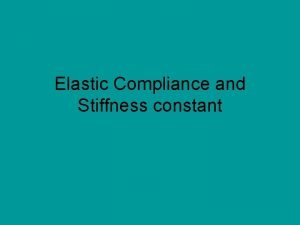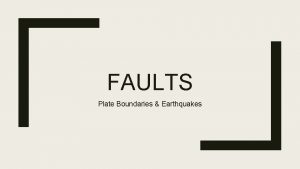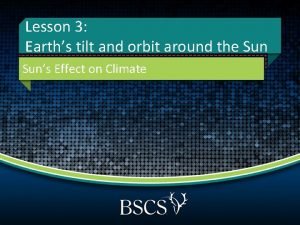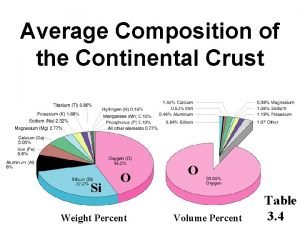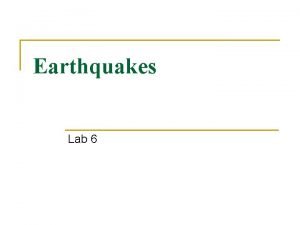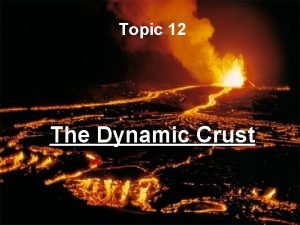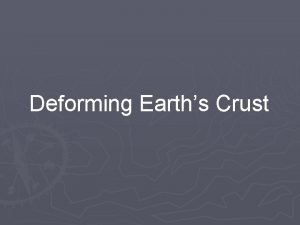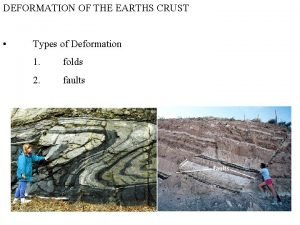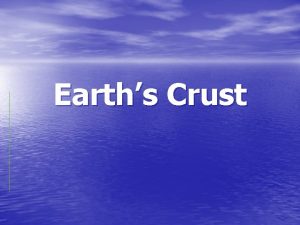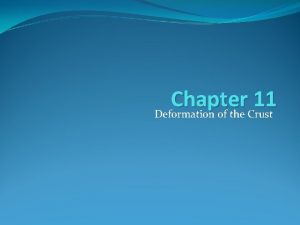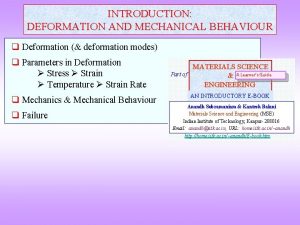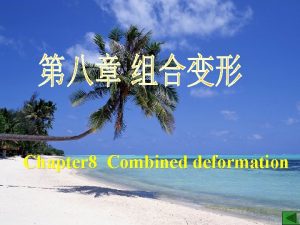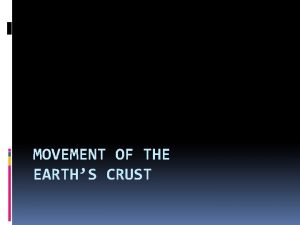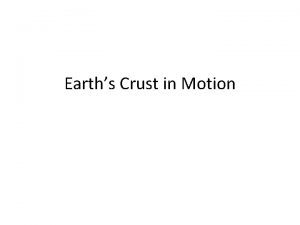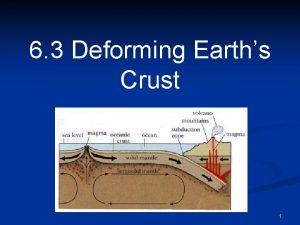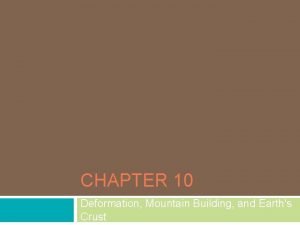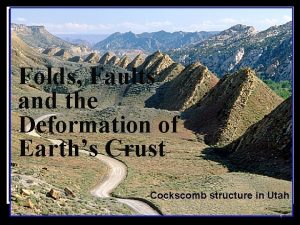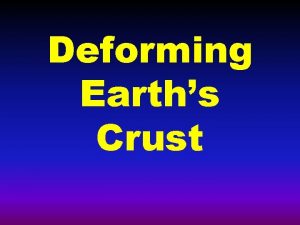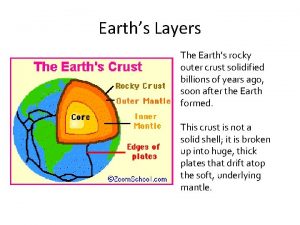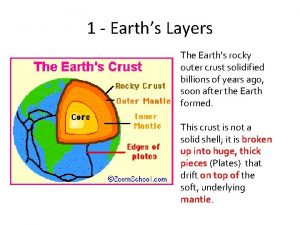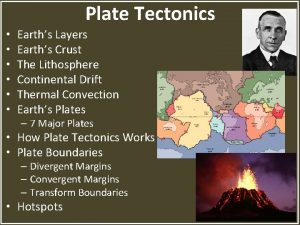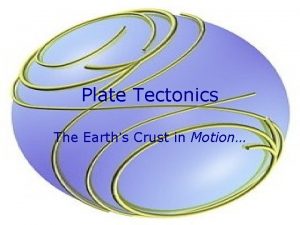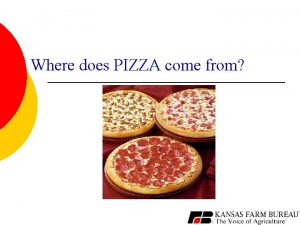DEFORMATION OF THE EARTHS CRUST Warm Up 1






























- Slides: 30

DEFORMATION OF THE EARTH’S CRUST

Warm Up 1. 2. Cast your vote in the black bins for boy or girl! Winner gets a bag of candy! Cut out the pieces of the plate tectonic map and arrange them on the globe by how you think the continents were once aligned. DO NOT glue them down until I check your map.



✕ The shape of the earth’s crust is always changing. ✕ Deformation is the bending, tilting, and breaking of the earth’s crust. ✕ Deformation occurs because of STRESS. ✕ Plate movement causes stress.

✕ Stress is caused by the pressure that builds up in the crust because of plate movement. ✕ The crust is exposed to three main types of stress.

1. COMPRESSION ✕ Rocks are squeezed together. ✕ Rocks are pushed higher into the air (C-C), deeper into the crust (O-O) or a combination of both (C-O). ✕ Occurs at convergent boundaries.

2. TENSION ✕ Rocks are pulled apart. ✕ As a result, rocks become thinner. ✕ Occurs at divergent boundaries.

3. SHEARING ✕ Rocks are pushed in opposite horizontal directions ✕ This causes rocks to twist, bend or break apart. ✕ Occurs at transform boundaries.

✕ When enough stress is applied, the shape of a rock can change permanently.

ROCKS CAN RESPOND TO STRESS IN 3 WAYS: ✕ They either: + + + Fold Fracture Fault

FOLDING ▶ The permanent bending of a rock exposed to extreme stress. ▶ The rock is permanently deformed, but it does not break. ▶ Caused by compression stress at convergent boundaries. ▶ 2 types of folds: ◦ ◦ Anticline Syncline

ANTICLINE: A FOLD IN THE ROCK THAT BENDS UPWARD.


SYNCLINE: A FOLD IN THE ROCK THAT BENDS DOWNWARD.


FRACTURE: THE ROCK BREAKS, BUT THE ROCK ON EITHER SIDE OF THE BREAK DOES NOT MOVE.

FAULT: ROCK BREAKS AND THE ROCK ON EITHER SIDE OF THE BREAK DOES MOVE!

3 TYPES OF FAULTS ✕ 1. Normal: when one side of the fault plane drops down ✕ Rock above the normal fault line is called the hanging wall and the rock below the normal fault line is called the foot wall. ✕ Occurs along divergent boundaries because of tension stress.



✕ 2. Reverse/thrust fault: when one side of the fault plane moves up (hanging wall up; footwall down). ✕ Opposite of a normal fault. ✕ Occurs along convergent boundaries because of compression stress.





✕ 3. Strike-Slip Fault: rock on either side of the fault plane slide horizontally. ✕ Occurs along transform fault because of shearing stress. ✕ Ex. San Andreas fault.



 Earths layers foldable
Earths layers foldable Earths crust
Earths crust Most abundant element in earth's crust
Most abundant element in earth's crust How thick is the earths crust
How thick is the earths crust Elastic strain and plastic strain
Elastic strain and plastic strain Whats earths moon called
Whats earths moon called Layers of the atmosphere
Layers of the atmosphere Earths orbit seasons
Earths orbit seasons Earths boundaries
Earths boundaries Earths roation
Earths roation Earths mantle
Earths mantle Which layer of the earth slowly moves like putty
Which layer of the earth slowly moves like putty What shape is earths orbit
What shape is earths orbit Study of the earth's physical features
Study of the earth's physical features Brown earths
Brown earths 4 spheres of the earth
4 spheres of the earth Whats earths moon called
Whats earths moon called Earths interior
Earths interior Earths early atmosphere contained
Earths early atmosphere contained Arch of constantine reliefs
Arch of constantine reliefs Honey as fertilizer for plants
Honey as fertilizer for plants Biome near the equator
Biome near the equator What does the earths tilt cause
What does the earths tilt cause Earths major crustal plates
Earths major crustal plates What does earths tilt do
What does earths tilt do Earths layer foldable
Earths layer foldable What is luna moon
What is luna moon Continental crust
Continental crust Inner core and outer core
Inner core and outer core Diastrophic meaning
Diastrophic meaning Earth's dynamic crust and interior topic 12
Earth's dynamic crust and interior topic 12




